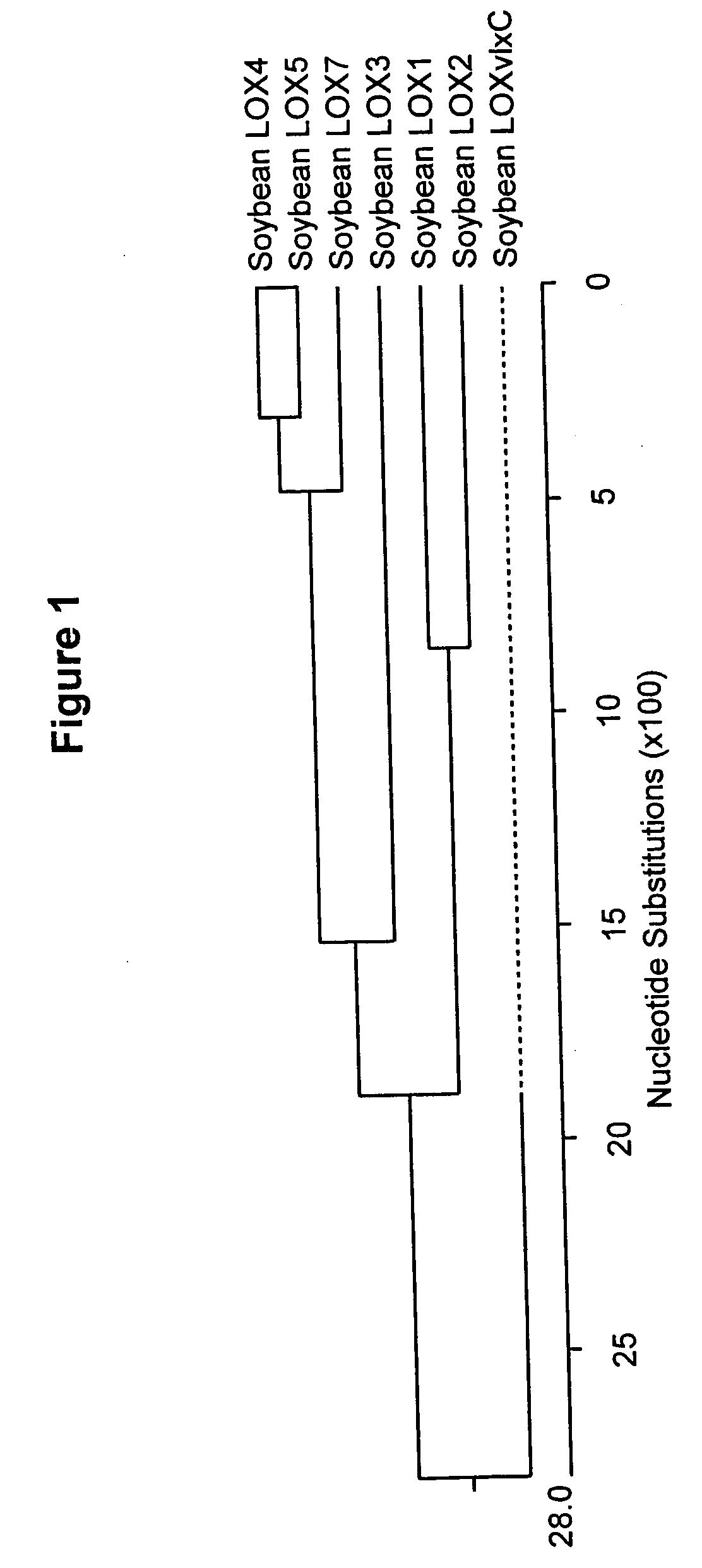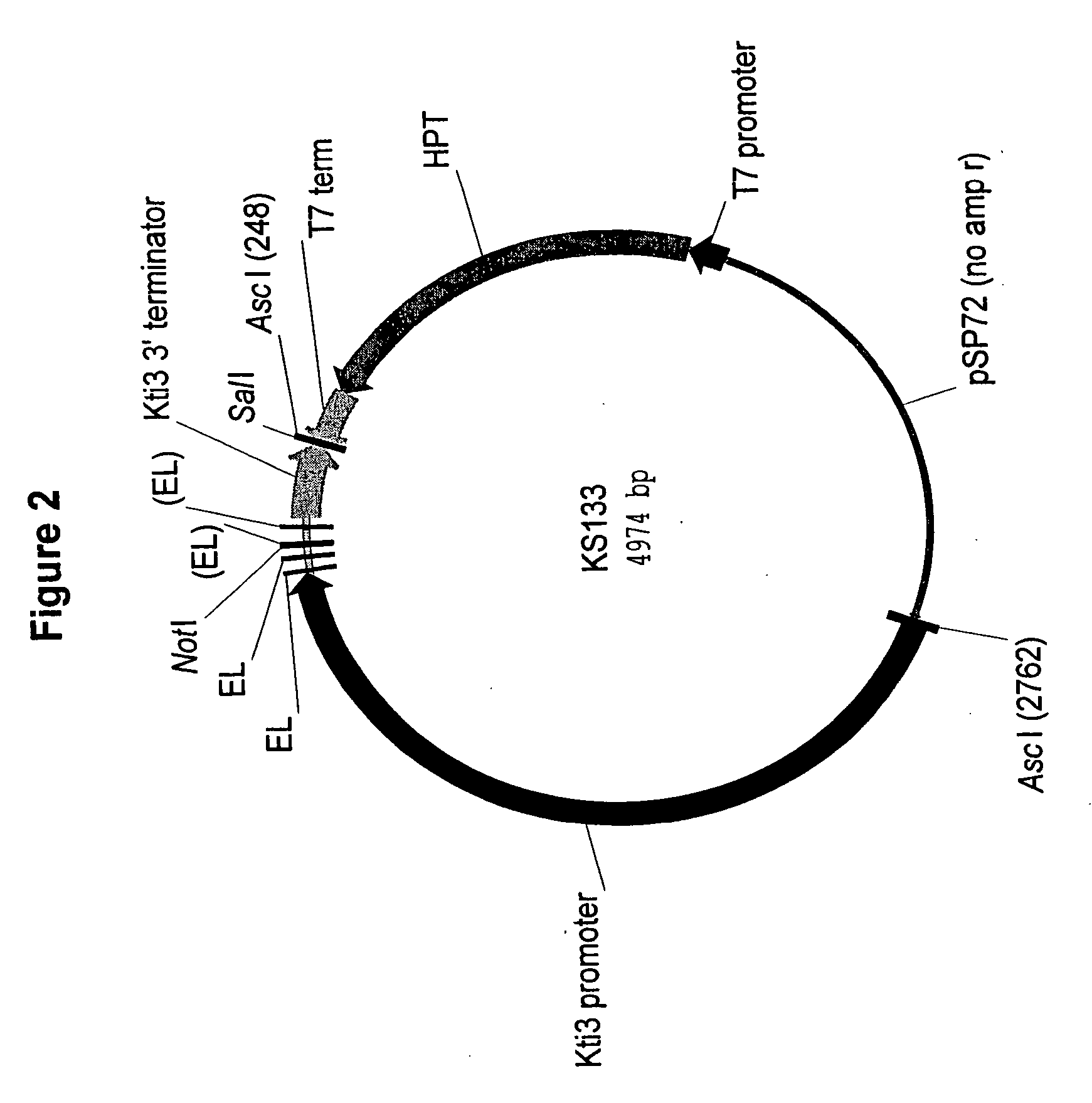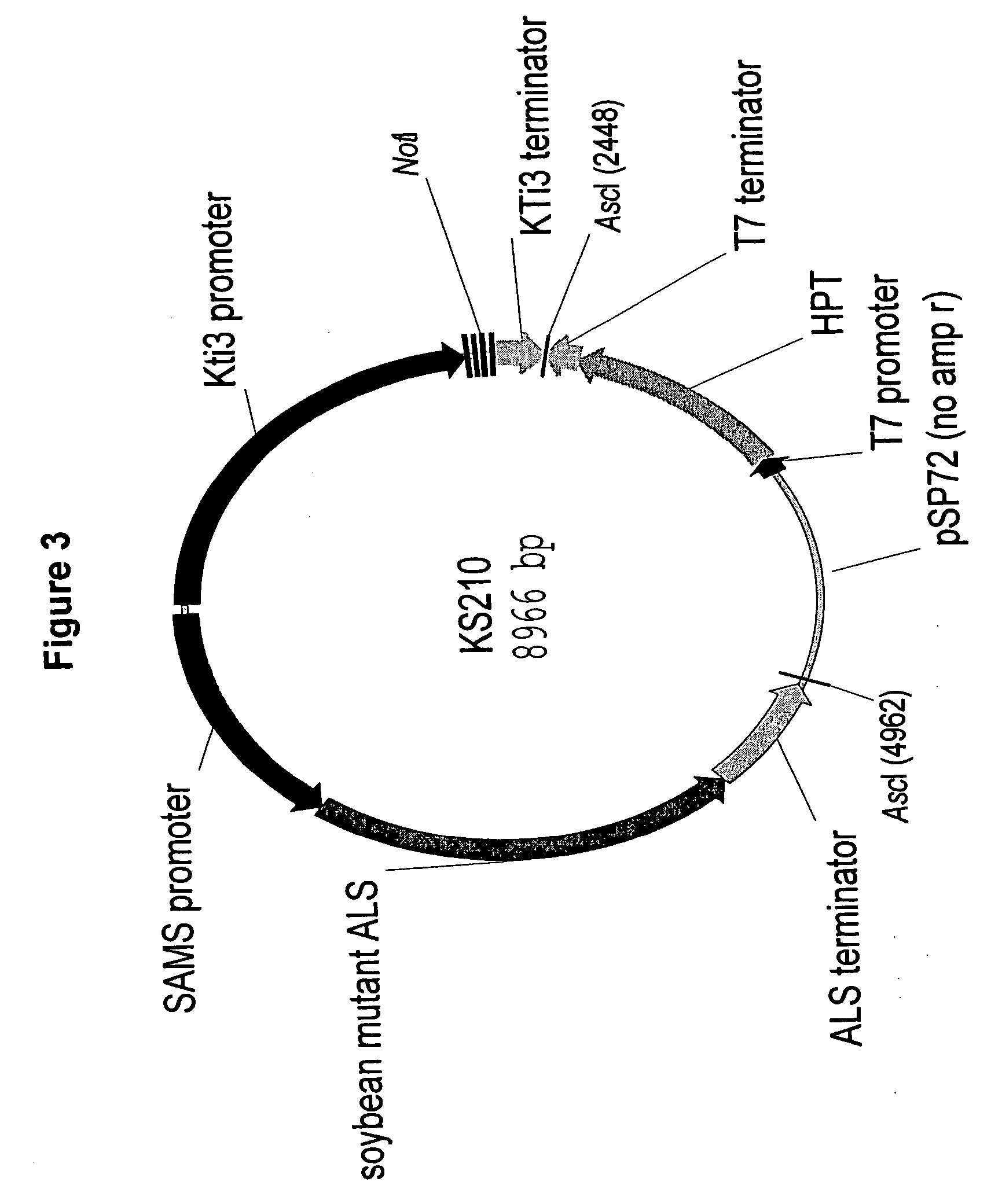Transgenic soybean seeds having reduced activity of lipoxygenases
a technology of lipoxygenase and soybean, which is applied in the field of transgenic soybean seeds having reduced the activity of lipoxygenase, can solve the problems of limiting the potential for wider use of this economical and healthy source of protein, the role of saponins in the undesirable taste characteristics of soy food products, and the difficulty of breeding and commercial agricultural use of this line, etc., to achieve suppressed expression of native seed lipoxygenase and reduce the activity of seed lip
- Summary
- Abstract
- Description
- Claims
- Application Information
AI Technical Summary
Benefits of technology
Problems solved by technology
Method used
Image
Examples
example 1
Preparation of cDNA Libraries and Sequencing of Entire cDNA Inserts
[0193] cDNA libraries representing mRNAs from various soybean tissues were prepared in Uni-ZAP™ XR vectors according to the manufacturer's protocol (Stratagene Cloning Systems, La Jolla, Calif.). Conversion of the Uni-ZAP™ XR libraries into plasmid libraries was accomplished according to the protocol provided by Stratagene. Upon conversion, cDNA inserts were contained in the plasmid vector pBluescript. cDNA inserts from randomly picked bacterial colonies containing recombinant pBluescript plasmids were amplified via polymerase chain reaction using primers specific for vector sequences flanking the inserted cDNA sequences or plasmid DNA was prepared from cultured bacterial cells. Amplified insert DNAs or plasmid DNAs were sequenced in dye-primer sequencing reactions to generate partial cDNA sequences (expressed sequence tags or “ESTs”; see Adams, M. D. et al., (1991) Science 252:1651). The resulting ESTs were analyze...
example 2
Characterization of cDNA Clones
[0197] cDNA clones encoding soybean LOX1, LOX2, LOX3, CHS, HPL, IFS, F3H, BAM, and OSC were identified in the Du Pont proprietary EST database. The possible function of the polypeptide encoded by each cDNA was identified by conducting BLAST (Basic Local Alignment Search Tool; Altschul, S. F., et al., (1993) J. Mol. Biol. 215:403-410) searches of the ESTs against public databases. The searches were conducted for similarity to sequences contained in the BLAST “nr” database (comprising all non-redundant GenBank CDS translations, sequences derived from the 3-dimensional structure Brookhaven Protein Data Bank, the last major release of the SWISS-PROT protein sequence database, EMBL, and DDBJ databases). The sequences were analyzed for similarity using the BLASTN algorithm provided by the National Center for Biotechnology Information (NCBI). The DNA sequences were translated in all reading frames and compared for similarity to all publicly available protein...
example 3
Preparation of Recombinant DNA Fragments for Suppression of Gene Expression in Seeds of Transformed Soybean
[0225] Recombinant DNA fragments were prepared to be used in transformation of soybean for suppression of gene expression of seed lipoxygenases (LOX1, LOX2, and LOX3), fatty acid desaturase (FAD2-1), chalcone synthase (CHS), isoflavone synthase (IFS), flavanone 3-hydroxylase (F3H), hydroperoxide lyase (HPL), oxidosqualene cyclase (OSC), and β-amyrin synthase (BAM). Recombinant DNA fragments expressing proteins that would be useful in identifying transformed tissue were also prepared. These latter proteins are also referred to as selectable markers. A description of the construction of the recombinant DNA fragments follows.
A. Recombinant DNA Fragment 1025
[0226] Recombinant DNA fragment 1025 was constructed to test whether the polynucleotide encoding a soybean seed lipoxygenase 3 provides enough sequence similarity to lead to silencing of all three seed lipoxygenase genes. Re...
PUM
| Property | Measurement | Unit |
|---|---|---|
| Time | aaaaa | aaaaa |
| Mass | aaaaa | aaaaa |
| Mass | aaaaa | aaaaa |
Abstract
Description
Claims
Application Information
 Login to View More
Login to View More - R&D
- Intellectual Property
- Life Sciences
- Materials
- Tech Scout
- Unparalleled Data Quality
- Higher Quality Content
- 60% Fewer Hallucinations
Browse by: Latest US Patents, China's latest patents, Technical Efficacy Thesaurus, Application Domain, Technology Topic, Popular Technical Reports.
© 2025 PatSnap. All rights reserved.Legal|Privacy policy|Modern Slavery Act Transparency Statement|Sitemap|About US| Contact US: help@patsnap.com



